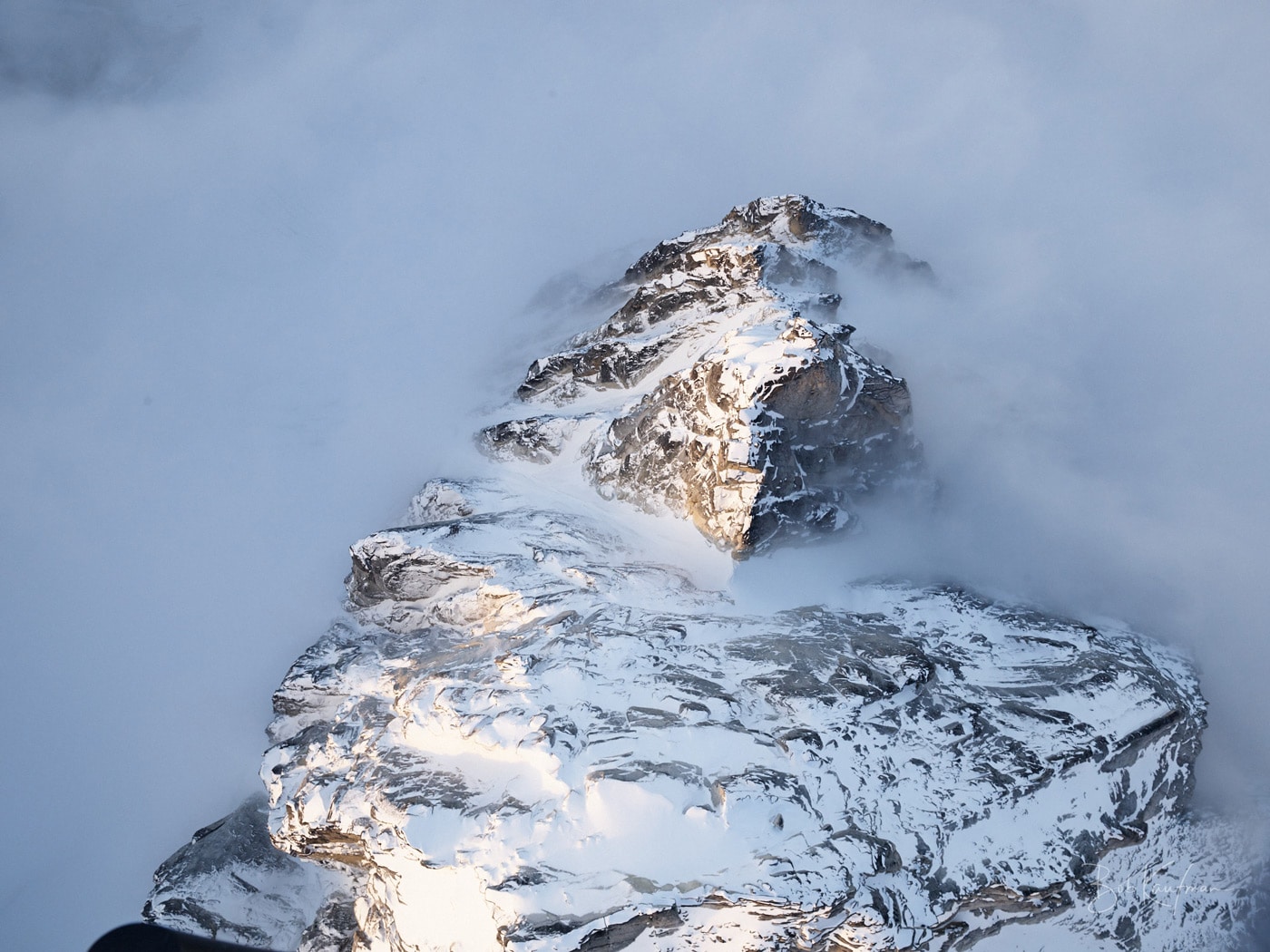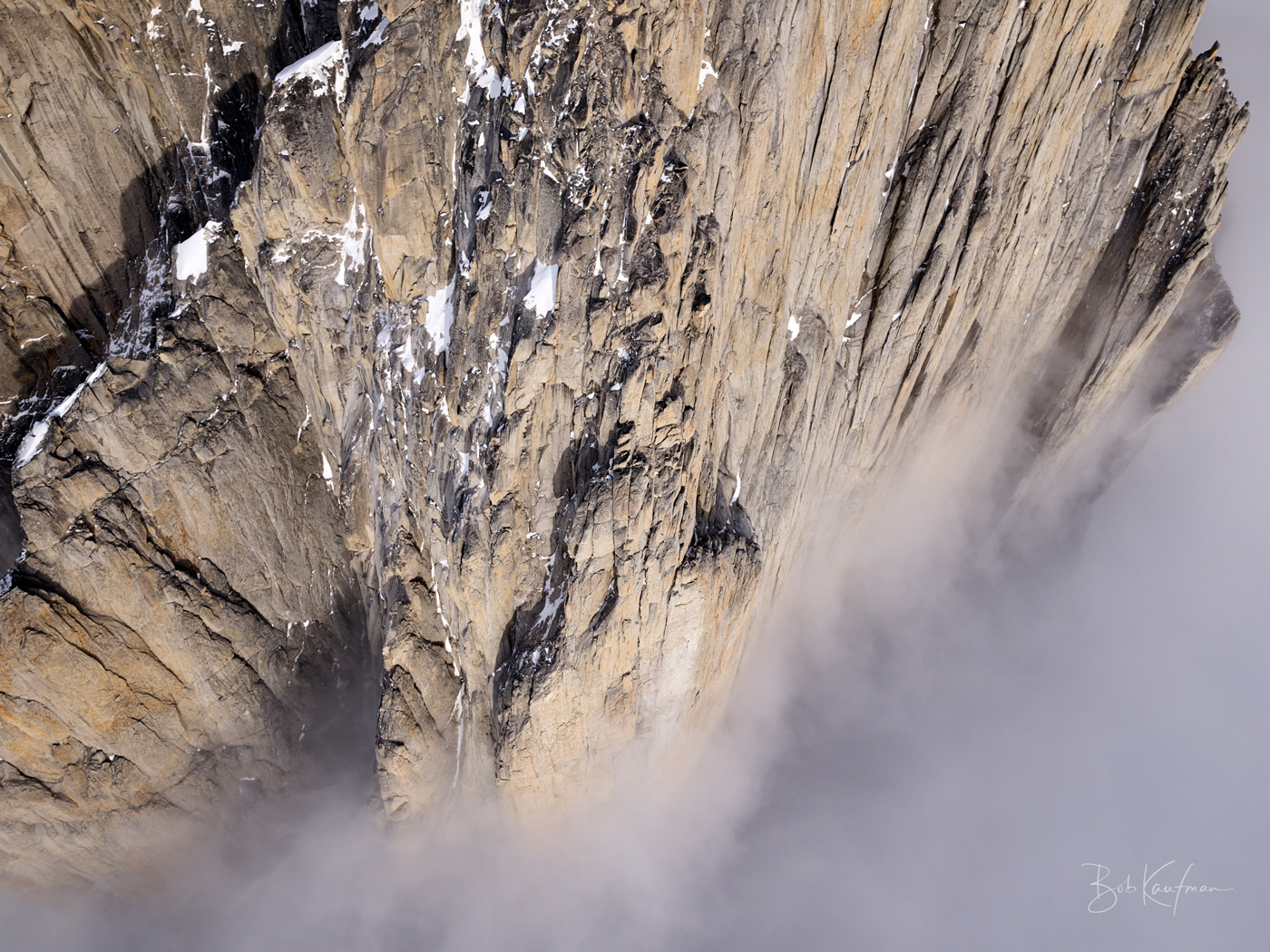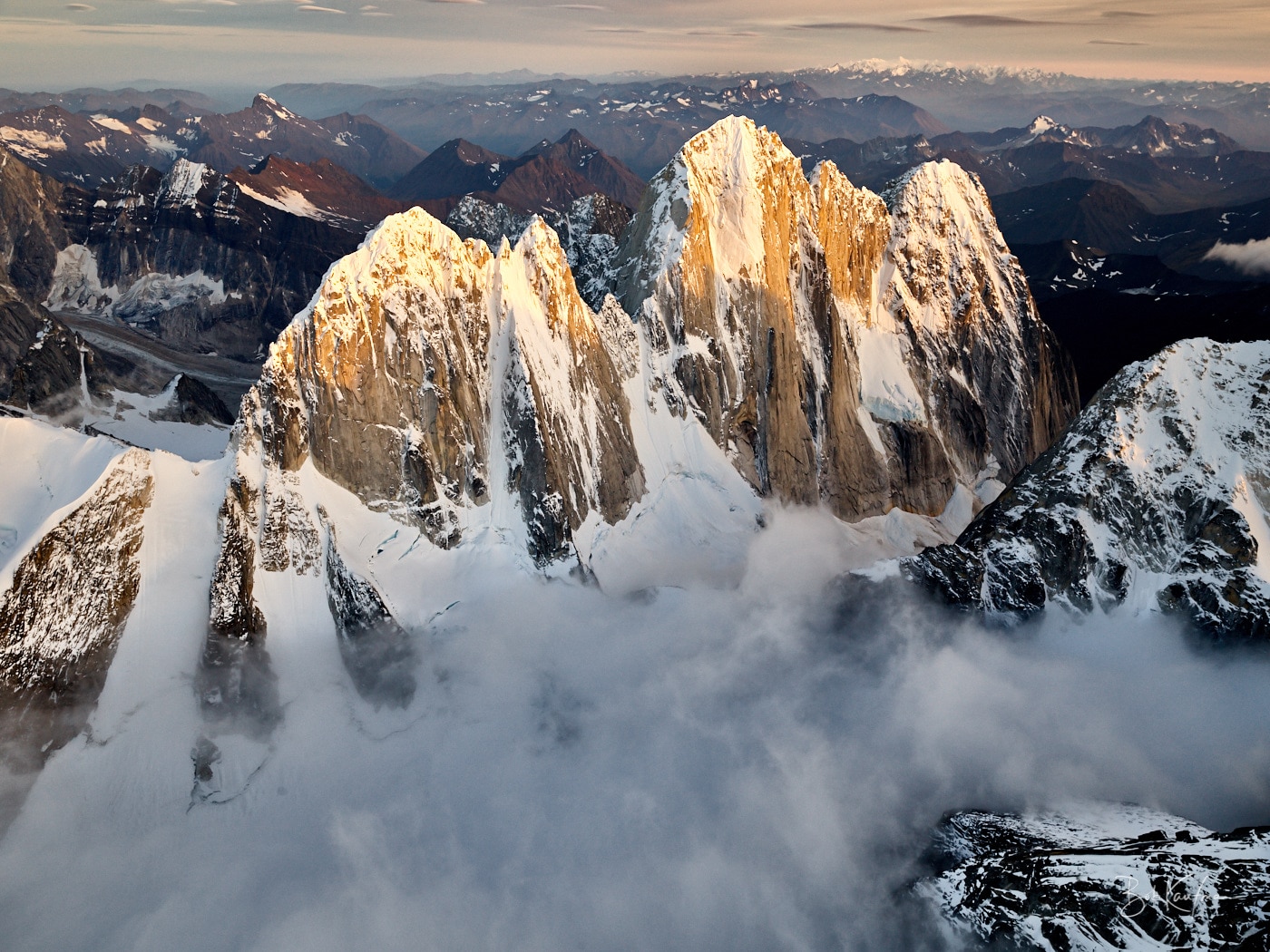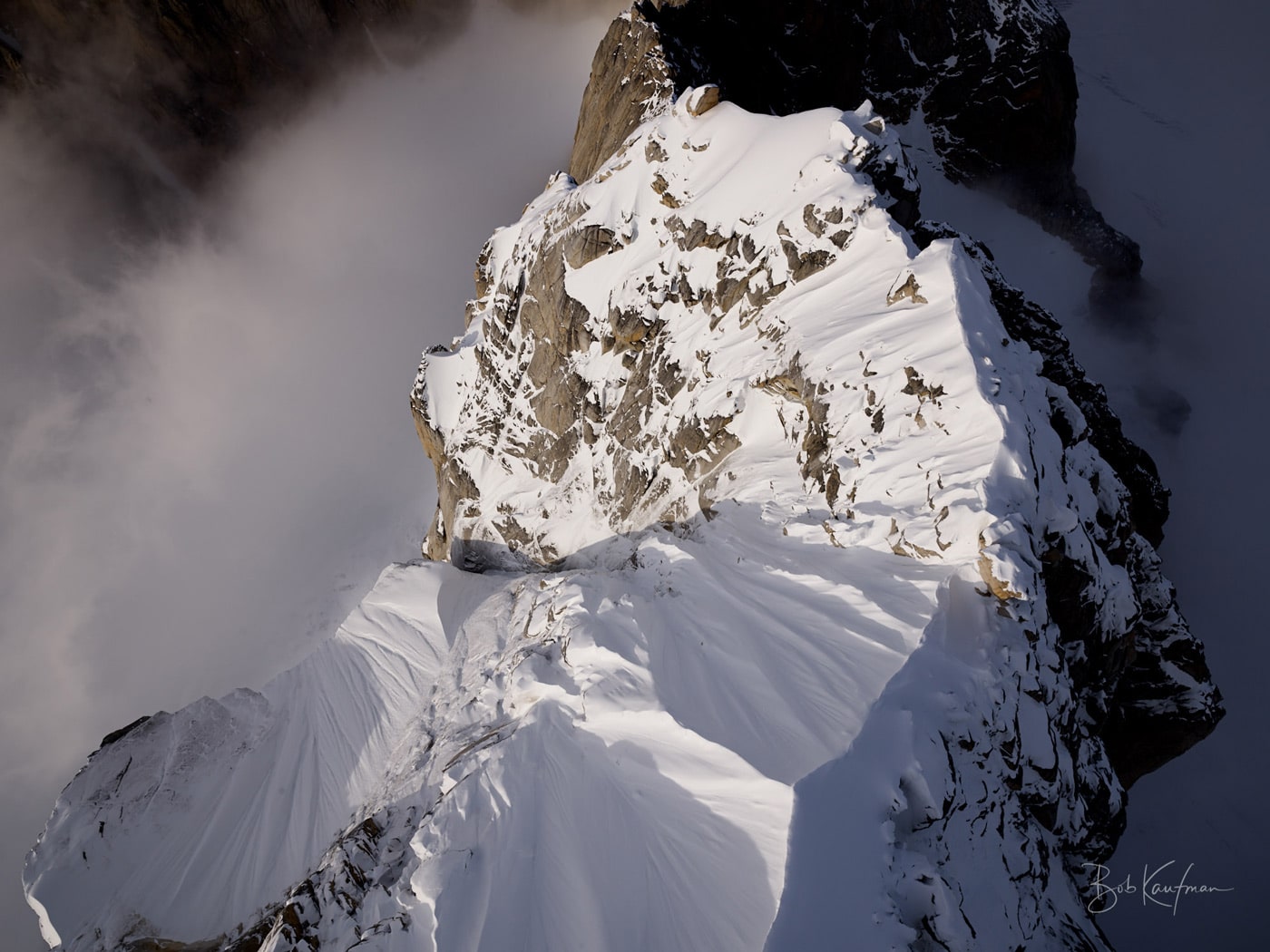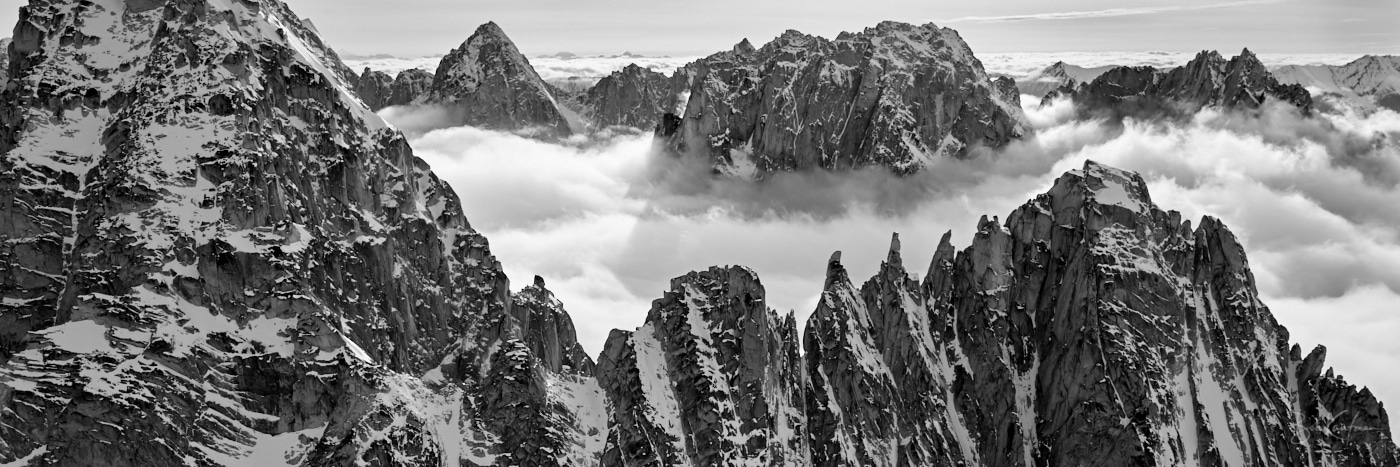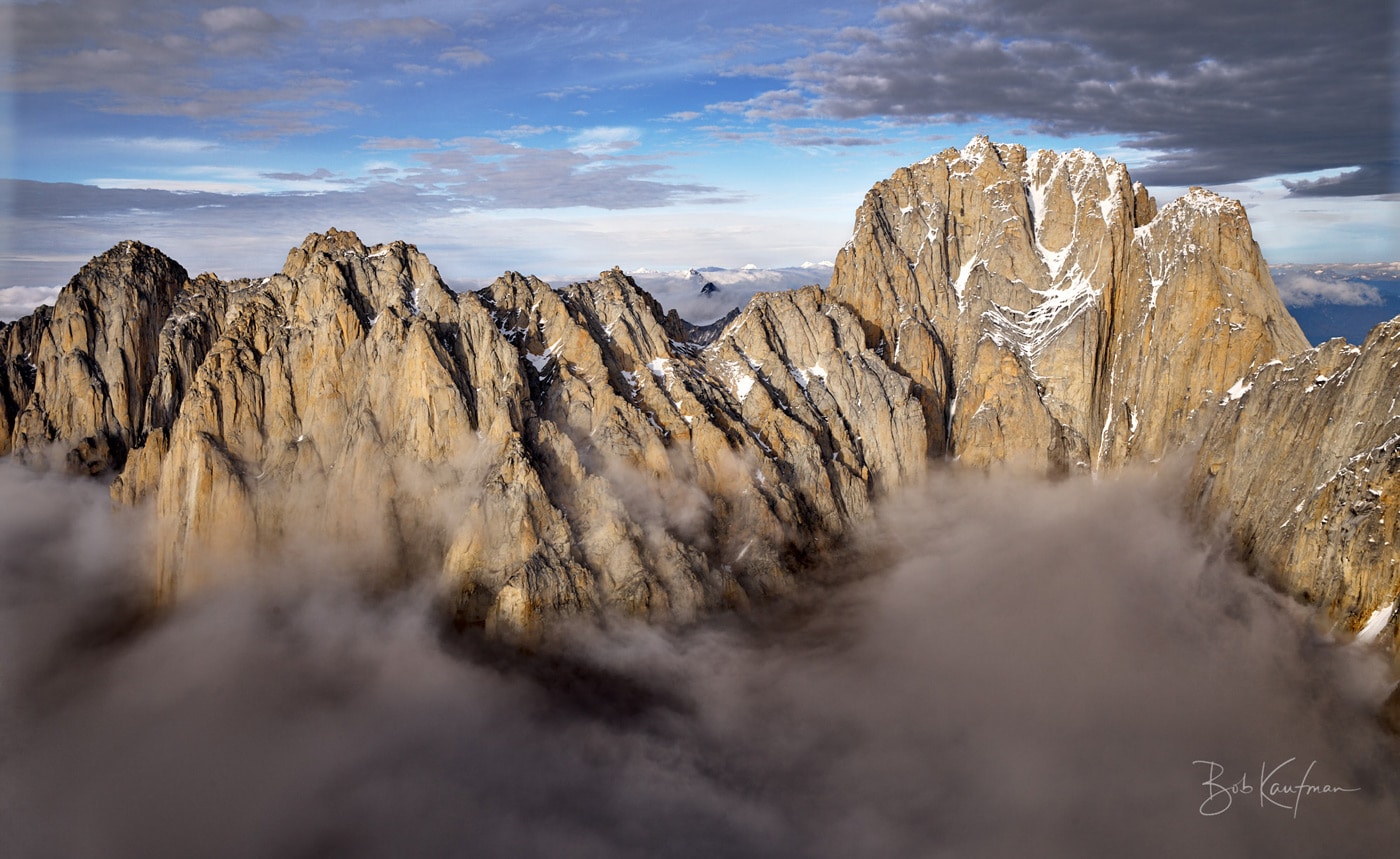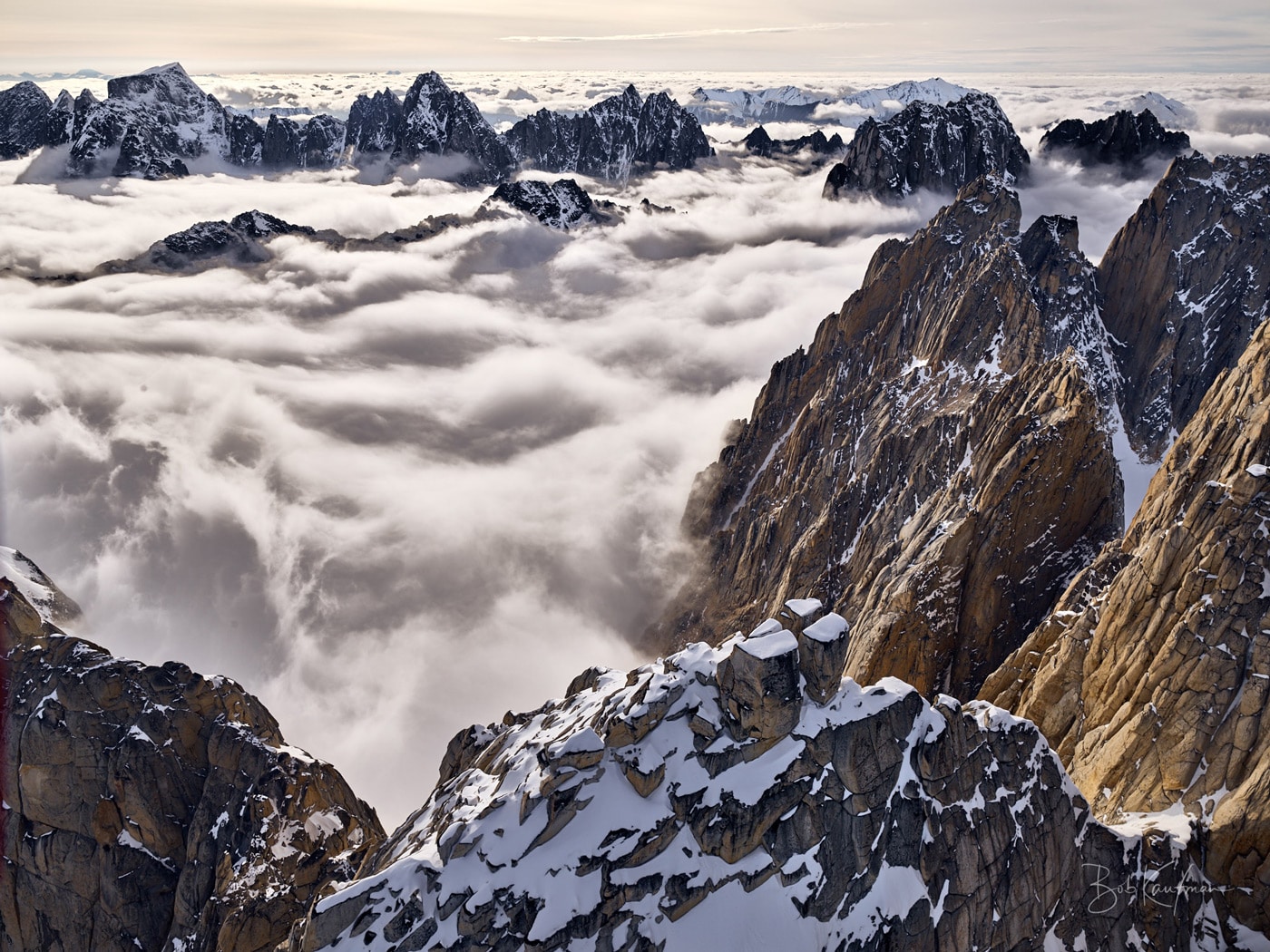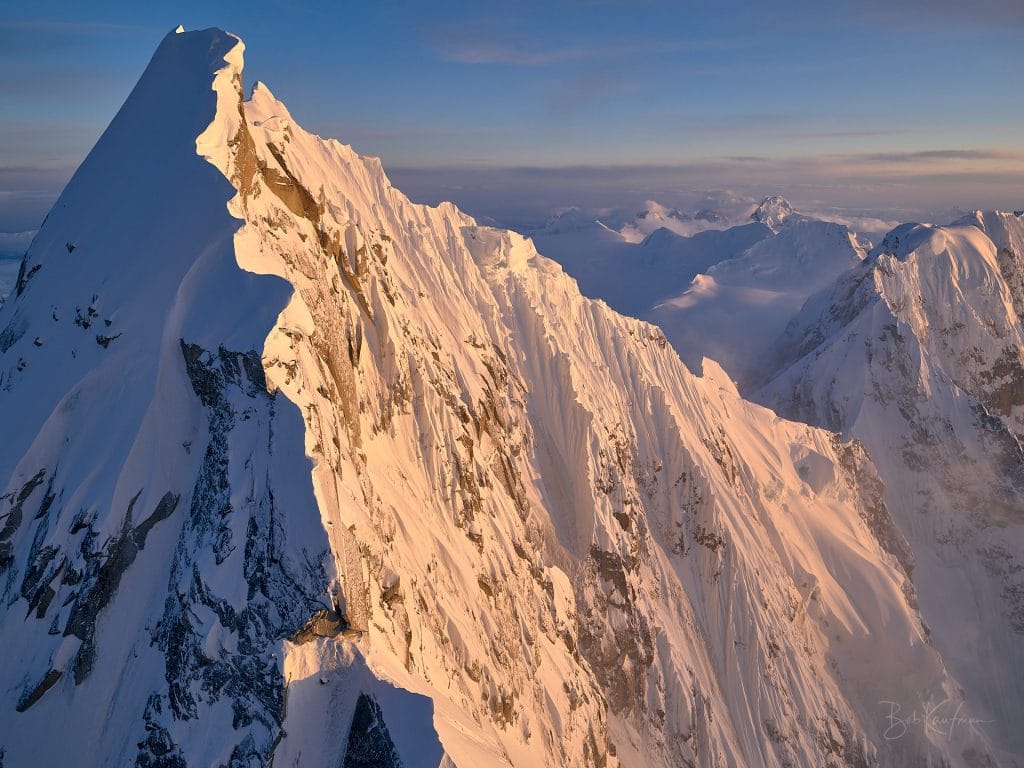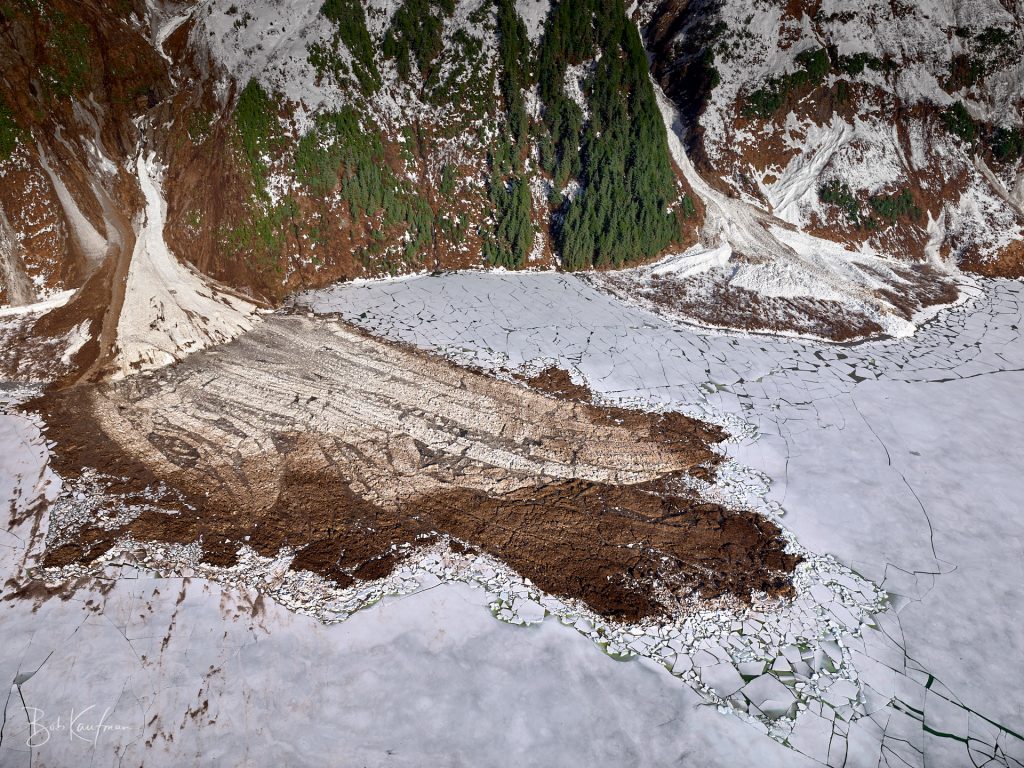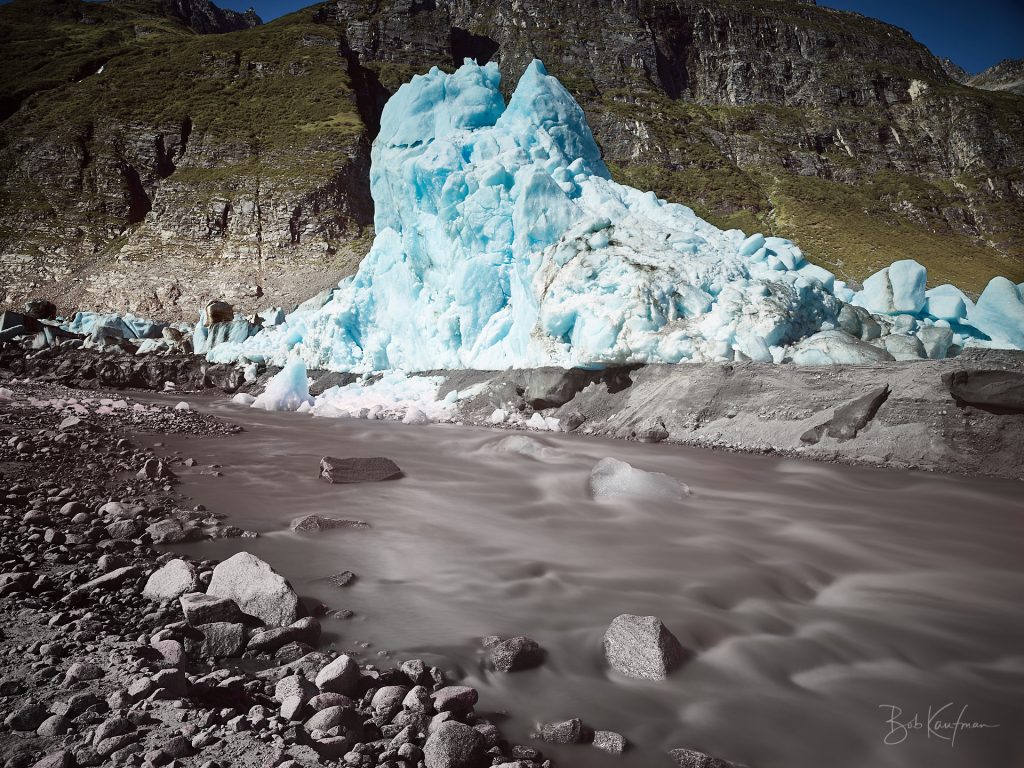
Sep 4, 2018
The Kichatnas
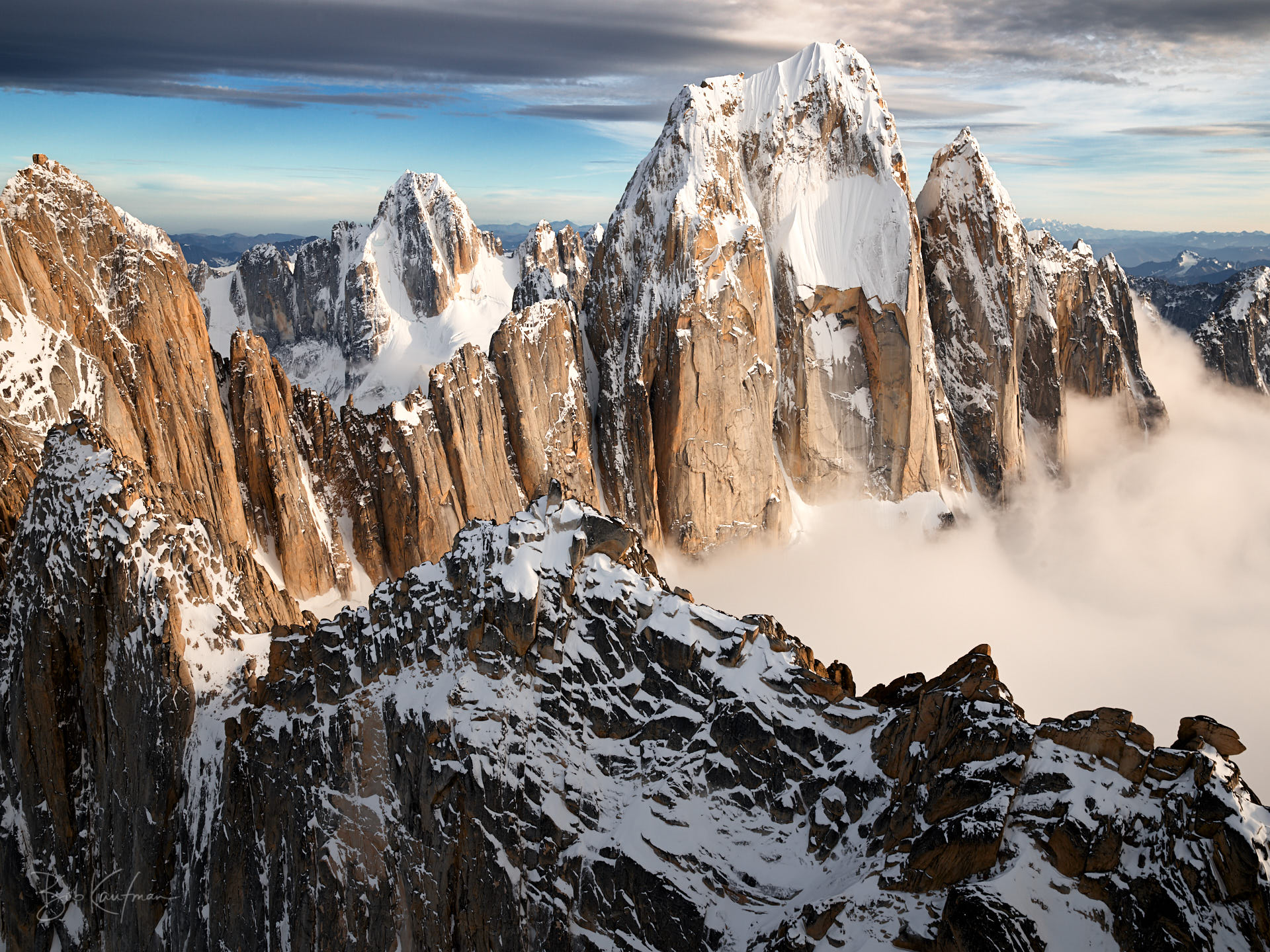
 The big walls of the Alaska Range may be the most dramatic landforms on earth. These mile-high cliffs and pinnacles tower above glaciers thousands of feet thick. It’s as hard for me to comprehend the forces of nature and spans of geologic time that created these immense granite faces as it is to comprehend the miracle of life itself. We are both millions of years in the making.
The big walls of the Alaska Range may be the most dramatic landforms on earth. These mile-high cliffs and pinnacles tower above glaciers thousands of feet thick. It’s as hard for me to comprehend the forces of nature and spans of geologic time that created these immense granite faces as it is to comprehend the miracle of life itself. We are both millions of years in the making.
Of these vertical realms, two reign supreme: The Great Gorge of the Ruth Glacier and the Kichatna or Cathedral Spires. Visitors can see the Ruth on the flightseeing circuit from Talkeetna. But the Kichatna towers are hidden, tucked into the almost inaccessible southwest corner of Denali National Park.
This far reach is mostly unknown and untraveled except by a few ambitious climbers and wilderness adventurers who mount difficult expeditions that require the highest levels of alpine commitment. And little wonder.
The Kichatnas are hard to get to. They rise from some of the most rugged terrain in the world, a full 70 air miles southwest of Denali itself. To their west yawns Interior Alaska, a vast expanse that reaches 400 miles to the Bering Sea without crossing a connected road. To the east and south lies civilization, but there are no overland trails. Reaching the Kichatnas from Anchorage requires flying 130 miles across the undeveloped Susitna River basin, or an 85-mile flight from Talkeetna. The area is known for freight-train winds and weeks-long storms. If something goes wrong, the possibility of rescue might be as remote as the location.
I have made it a personal project to photograph the spires—and other images of Alaska Unseen—and then share them with others. These photos are the result.
Big walls and big mountains are a problematic subject to photograph. They are unlike anything most people have ever seen. When you fly face-to-face with them—getting batted and bounced around like a fly in a gale—you feel overwhelmed by their sheer scale. It’s easy to start shooting away. Years ago, I would return from these shoots, review my images, and feel hugely disappointed. What felt so dramatic and powerful in person just fell flat in my images; they did not convey the scale and immensity.
When I now photograph these big, heavily crevassed faces, I focus on two things: angle of view and details.
The Kichatnas are particularly challenging from an angle-of-view perspective. I’ve learned that the best elevation for capturing scale is to fly near the tops of the peaks—but not too far above. I’ve also learned that I need to isolate my subject by setting it against a distant background. These spires are bunched so closely together that it’s hard to achieve that separation; they all jumble together. This particular set of photos required a game of finding those rare openings and angles where it all came together—and then navigating back to the same spot over and over.
Finding the right details can be just as challenging. I’ve learned to search for elements that reveal the massive scale and timelessness of these mountains: the water streaks drawn through the millennia down the granite; ridge top crevasses sagging under the weight of decades of snowfalls; semi-truck sized ice blocks littered across the glacier floor.
To add to the complexity, these composition decisions must be made in a stressful aviation environment. There are many hidden hazards flying near these walls, foremost among them getting caught in an invisible downdraft more powerful than the aircraft’s ability to climb. When I photograph, the door of the helicopter is off. I lean out into the wind stream with my camera, sometimes catching a vertigo-inducing glance straight down, with nothing but thin air between me and the glaciers, rock fields, and rivers thousands of feet below.
To identify the safest flight path to capture the best angle of view with the most vivid details, I sometimes need to circle four or five times in the helicopter, often in a circuit more than a mile long. It’s not always easy to find my way back to the same spot—or to avoid being distracted by something even more interesting mid-circuit and abandoning your initial objective.
You can’t overwork any one objective. Time means fuel, and both are unforgivingly limited on an aerial shoot. You need the discipline to alternate between full concentration on the present composition versus asking whether it’s time to move on to the next scene. Resolving this dilemma hinges on discipline. You must be clear before the shoot both on your objectives and your limitations.
The 90 minutes it takes for my helicopter to reach the Kichatnas introduces even more uncertainties. You set off without knowing the weather or light conditions upon arrival. You burn most of your fuel on the flight out and back, leaving precious little time to circle and photograph.
Nothing is harder as a photographer than finding the magic light, having the perfect conditions—and having to call off the shoot and fly home.
But I can never forget that my responsibilities as a pilot are more important than my photographic goals. You might miss a good photo, but you cannot get certain piloting decisions wrong. I am often anxious and always conservative about fuel management. I have to know that, once I reach my designated fuel level, I can trust myself to turn away and fly home. Even if what I am leaving behind might be the best image of my career.
It’s hard to fathom that these otherworldly landforms exist only an hour or two away from the city. Capturing them required many unlikely factors to converge—some unfolding over millennia, others playing out in split-second adjustments to the cyclic stick while flying 4000 above the deck.
I think of the immense tectonic forces that thrust the granite towers a mile above the earth. The tens of millions of years of erosion by wind, snow, and ice that sculpted them into their present form. My long training as a pilot and my love of photography. My obsession with the unique beauty found in Alaska’s most remote places.
I feel lucky to be in a position to bring these images and scenes home for everybody to see. Alaska Unseen belongs to us all.
Pan left and right to see the pano

